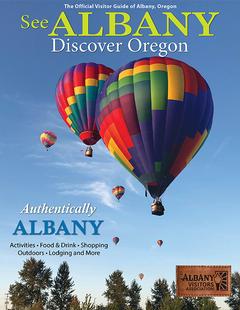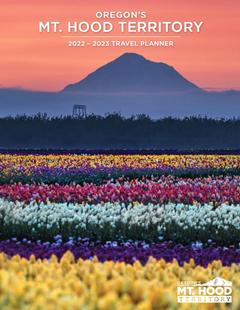Basics
- Location:
- Northeastern Oregon through the Blue Mountains
- Surface:
- Paved
- Length:
- 130 miles (209 km)
- Time:
- 3 hours to 3 days
- Season:
- Forest road 53 is usually closed during the winter
- Fees:
- You must always pay to camp. Fees vary.
Description
The Blue Mountain Scenic Byway is a journey through natural and human history, crossing several National Forests and traveling along many waterways. The mountains here appear blue in the distance as the views of the land mingle with the views of the expansive pacific sky.
The Blue Mountain Scenic Byway starts at the North Fork John Day campground junction, 10 miles north of Granite. At this junction, take Forest Road 53 west to start the Blue Mountain Scenic Byway. Forest Road 53 continues northwest for about 65 miles until Heppner. From there, take HWY 73 northwest for about 50 miles until I-84, the Columbia River, and the end of the byway.
An extra thrill can be found along the way by stopping at Heppner and its most notable landmark, a 1902 original courthouse. The courthouse has a history of clients murdering their lawyers and many people have reported hearing laughter from ghost children lingering around the courthouse steps. Look inside to catch a glimpse of one of the numerous spirits rumored to walk the halls in passing. A less frightening experience can be found hiking up to Potamus Point for a view of Potamus Canyon and to watch wintering deer and elk roam around. North Fork John Day Overlook provides another spectacular view, with clear days presenting a view all the way to Bridge Creek Flats and the Strawberry Mountains.
Tourism Resources
Helpful Links
Tourism Resources
Points of Interest
Points of Interest Along The Way
Cutsforth Park (OR)
Cutsforth Park 16 miles southeast of Heppner on the Willow Creek Road, was donated to Morrow County by Orville and Barbara Cutsforth. The park offers 15 trailer pads with full hookups and 7 trailer/tent sites without hookups but with water. There's a picnic area for large and small groups, a children's playground with play equipment, restroom facilities with showers, trails for hiking, and both a pond and a stream for fishing.
Directions
Go 16 miles southeast of Heppner.
Hardman (OR)
This ghost town is a short 40-mile round-trip off the byway. It was once a favorite stopover for freighters and stage drivers in the late 1800s. The community thrived until the 1920s when the railroad was built to Heppner rather than to Hardman. Today, the town's buildings remain, and along with the renovated dance hall, give tourists an insight into the town, just as it was at the beginning of the 20th Century.
Directions
From Heppner, take SR-206/207 southwest about 20 miles.
Heppner (OR)
Heppner, the county seat for Morrow County, is known for Irish heritage and its notable 1902 vintage courthouse. Heppner is the gateway to the western portion of the Blue Mountains and provides easy access to nearby mountain recreation areas. Agriculture and forestry provide the base economy for this community of 1,500 residents. The Morrow County Museum and Agricultural Collections contain historic displays of pioneer life.
Ione (OR)
Ione is a lovely community of gracious homes and several business facilities, nestled along Willow Creek. This city is surrounded by rolling wheat fields and landscapes dotted with livestock. The historic Oregon Trail crosses near Ione at Wells Spring, a favorite stopover for early century wagon trains.
Lexington (OR)
Lexington, in the center of agricultural Morrow County, is home for the county-wide school district office, the county airport and the Morrow County Public Works Dept., where a traveler's information kiosk is provided. In the early 1900s, this busy community was the trading center for products entering and leaving the county.
North Fork John Day Campground and Trailhead (OR)
The North Fork John Day Campground provides a wide variety of recreational opportunities for a small overnight fee. The Wild and Scenic North Fork John Day River supports a trout population for avid fishermen and is a popular camping sight for hunters during fall. The North Fork John day wilderness borders on this campground, providing access to hunters, hikers, and horseback riders. There are 16 tent/trailer sites and 2 tent sites. The wilderness trailhead at this site features horse-handling facilities such as a loading ramp, corrals and hitching posts. A scenic byway information board is conveniently located nearby.
Oregon National Historic Trail (OR)
The Historic Columbia River Highway follows the same route as the Oregon Trail.
The 2,170-mile Oregon Trail was a crude network of rutted traces from the Missouri River to the Willamette River that was used by nearly 400,000 people. The Trail evokes an instant image of this continent's settlement.
Congress designated the Oregon National Historic Trail in 1978. Today the trail corridor contains some 300 miles of discernible ruts and 125 historic sites.
When travelers reached The Dalles, before the opening of the Barlow Road in 1846, they had no choice but to build rafts and float down the treacherous Columbia.
At the Gorge Discovery Center in The Dalles, there is a living history exhibit during summer weekends that encourages you to make your own "decision at The Dalles" whether to take the Barlow Road or the Columbia River.
Ukiah (OR)
Geologists tell us the Ukiah area was once covered by a large lake. The Indians speak of a "great rumbling" that happened "many moons ago" and the lake vanished as through it had never been there. Indians have been coming to the area for many years to gather wild blue camas root early in the summer, relying on the root as a food source.
Originally called Camas Prairie, the name was changed to Ukiah by E.B. Gambee who lived in Ukiah, California prior to Ukiah, Oregon. With just at 250 people, Ukiah still maintains the "small-town, independent" character it did when it was first founded in the late 1800s. The town welcomes visitors and provides recreationalists essential services to enjoy the many outdoor activities readily available in the area: birding, biking, hiking, hunting and camping.
Umatilla National Forest (OR)
The Umatilla National Forest covers a large section of the Blue Mountains. Enjoy a wide variety of outdoor recreation, including camping, hiking, fishing, hunting and bird watching. Snow ski and snowmobile in winter.
Wallowa-Whitman National Forest (OR)
As the largest forest in the Pacific Northwest, the Wallowa Whitman invites visitors to wallow in an abundance of recreational opportunities.
















